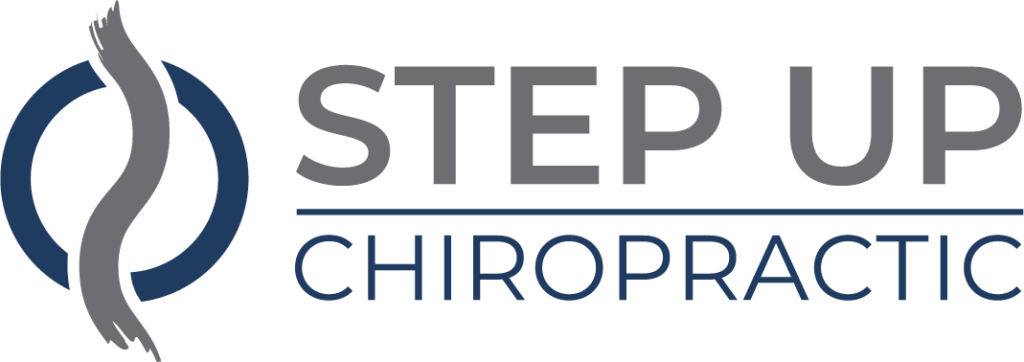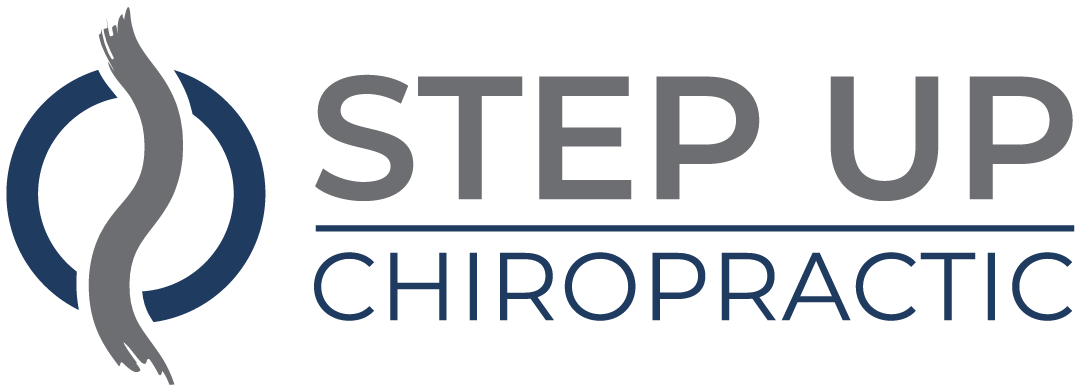You might think flexibility is just about stretching, but it actually offers a range of surprising benefits that can greatly enhance your daily life. By improving your range of motion, you can prevent injuries and boost your athletic performance, all while enjoying better posture and reduced muscle tension. But that's not all—flexibility also plays an essential role in mental clarity and stress relief. Curious about how these factors intertwine and what they could mean for you? Let's explore further.
Improved Range of Motion
Improved range of motion is essential for maintaining an active lifestyle and preventing injuries. When you increase your flexibility, you allow your joints and muscles to move more freely, which can enhance your overall performance in various activities. Whether you're running, lifting weights, or participating in a favorite sport, a greater range of motion can lead to better form and efficiency.
You mightn't realize it, but incorporating regular stretching and mobility exercises into your routine can make a significant difference. Stretching helps elongate the muscles and tendons, which reduces tightness and improves your ability to perform daily tasks. The more flexible you are, the easier it becomes to reach, bend, and twist without strain.
You should also consider the benefits of dynamic stretching, which prepares your muscles for movement by promoting blood flow and increasing muscle temperature. This can be particularly effective before workouts or sports, as it primes your body for physical activity.
On the other hand, static stretching can be beneficial after your workout, helping to cool down your muscles and improve flexibility over time.
Don't underestimate the impact of improved range of motion on your mental well-being as well. Feeling more agile and flexible can boost your confidence and motivate you to stay active.
Injury Prevention
To prevent injuries, you need to focus on improving your range of motion and strengthening your muscles and joints.
By enhancing flexibility, you'll not only reduce the risk of strains and sprains but also support your overall physical performance.
Let's explore how these factors work together to keep you safe and active.
Improved Range of Motion
When you enhance your flexibility, you're not just improving your athletic performance; you're also considerably reducing your risk of injuries. A better range of motion allows your muscles and joints to operate more efficiently, which means you can move freely without straining. This increased mobility helps your body adapt to various physical activities, whether you're running, lifting weights, or participating in sports.
By working on your flexibility, you enable your joints to move through their full range, reducing the likelihood of strains and sprains. Tight muscles can limit movement, making you more susceptible to injuries during sudden or awkward movements. When your body can easily stretch and contract, it responds better to the demands of physical activity, which helps prevent injuries.
In addition, with improved flexibility, you can maintain proper posture and alignment during exercises. This not only enhances your performance but also protects you from injuries caused by poor form.
Strengthened Muscles and Joints
Over time, strengthening your muscles and joints plays an essential role in injury prevention. When you focus on flexibility, you're not just improving your range of motion; you're also fortifying the structures that support your body. Strong muscles provide stability and help absorb impact during physical activities, reducing the risk of tears or strains.
Incorporating flexibility exercises like yoga or dynamic stretching into your routine enhances muscle elasticity. This elasticity allows your muscles to respond better to sudden movements, minimizing the likelihood of injuries. Additionally, strong joints are less prone to instability, which can lead to falls or accidents.
By regularly engaging in strength training exercises, you're not just building muscle; you're also reinforcing connective tissues like tendons and ligaments. These tissues play a vital role in joint stability and overall mobility.
When you maintain flexibility alongside strength, you create a balanced support system that protects your body. Ultimately, investing time in both flexibility and strength is a smart move to safeguard your physical health.
Enhanced Athletic Performance
To boost your athletic performance, enhancing your flexibility is key.
With an improved range of motion, you'll not only execute movements more efficiently but also reduce the risk of injury.
Improved Range of Motion
Flexibility is your key to releasing an improved range of motion, which can greatly enhance athletic performance. When you increase your flexibility, you allow your joints and muscles to move more freely, leading to better overall movement quality. This means you can execute techniques with greater efficiency, whether you're sprinting, jumping, or throwing.
Having an improved range of motion can also help you achieve specific athletic goals. For instance, if you're a runner, increased flexibility in your hips and legs can boost your stride length and speed. In sports like gymnastics or dance, greater flexibility can improve your balance and control, enabling you to perform complex routines with ease.
Incorporating flexibility training into your routine can bring these benefits to life. Simple stretches and dynamic movements can gradually enhance your flexibility.
It's not just about being able to touch your toes; it's about releasing your body's full potential.
Injury Prevention Techniques
Injuries can sideline athletes and derail training progress, but incorporating effective injury prevention techniques can keep you in the game. One of the most essential steps is to include a dynamic warm-up routine. This primes your muscles, increases blood flow, and prepares your body for the demands of your sport. Think of exercises like leg swings, arm circles, and high knees to get your heart rate up and joints moving.
Another key technique is maintaining flexibility through regular stretching. By focusing on both static and dynamic stretches, you can enhance your range of motion and reduce the risk of strains and tears. Yoga and Pilates are excellent for building flexibility while also improving strength and balance.
Listening to your body is critical. If you feel pain or discomfort, don't push through it. Rest and recovery are just as important as training.
Additionally, cross-training can be beneficial. By incorporating various activities, you can strengthen different muscle groups and prevent overuse injuries.
Finally, consider consulting a professional for personalized injury prevention strategies. Staying proactive about these techniques guarantees you're not just performing at your best but also staying injury-free.
Better Posture
Improving your posture can transform how you feel and move throughout the day. When you stand tall and sit up straight, you're not just creating a more confident appearance; you're also supporting your body's natural alignment. This can lead to significant benefits that enhance your overall well-being.
Here are three key advantages of better posture:
- Increased Energy Levels: Good posture allows your body to function more efficiently. When your spine is aligned, your muscles don't have to work as hard to support your weight, which means you'll feel less fatigued throughout the day.
- Enhanced Breathing: When you slouch, your lungs can't fully expand, limiting your oxygen intake. By sitting or standing with proper posture, you create more space for your lungs to expand fully. This can lead to deeper, more effective breathing, which boosts your energy and concentration.
- Improved Confidence: Believe it or not, your body language affects how you feel. Standing tall with your shoulders back can influence your mood and self-esteem. It sends a message to yourself—and the world—that you're confident and capable.
Reduced Muscle Tension
When you work on reducing muscle tension, you'll notice an increase in blood circulation throughout your body.
This improvement not only helps alleviate pain but also enhances your overall flexibility.
#
Increased Blood Circulation
Enhancing flexibility greatly boosts blood circulation, which in turn helps reduce muscle tension. When your body becomes more flexible, blood flows more freely through your muscles and tissues, providing essential nutrients and oxygen.
This increased circulation can lead to a variety of benefits:
- Faster Recovery: Improved blood flow helps flush out toxins and reduces recovery time after exercise. You'll feel less sore and be ready to tackle your next workout sooner.
- Enhanced Performance: With better circulation, your muscles receive the nutrients they need to perform at their best. You'll experience improved stamina and strength, making your workouts more effective.
- Reduced Fatigue: As blood circulation increases, it helps deliver oxygen more efficiently to your muscles. This can lead to lower levels of fatigue, allowing you to stay energized throughout the day.
Pain Relief Benefits
With increased blood circulation comes a significant reduction in muscle tension, leading to effective pain relief.
When you improve your flexibility through stretching and mobility exercises, you not only enhance your range of motion but also promote better blood flow to your muscles. This increased circulation helps deliver oxygen and nutrients while flushing out waste products, which can contribute to discomfort and tightness.
As you stretch, your muscles lengthen and relax, alleviating the tightness that often leads to pain. You might notice that areas prone to soreness, like your back or shoulders, feel more relaxed after consistent flexibility training. This relief can be especially beneficial if you spend long hours sitting or engaging in repetitive activities.
Incorporating flexibility exercises into your routine can also help prevent future injuries. By keeping your muscles supple and your joints mobile, you're less likely to experience strains or sprains.
## Increased Blood Circulation
Improved blood circulation is a key benefit of enhancing your flexibility. When you stretch and move your body, you not only increase your range of motion but also promote better blood flow. This can lead to several important advantages for your overall health and well-being.
Here are three notable ways improved blood circulation can benefit you:
- Nutrient Delivery: Enhanced circulation guarantees that essential nutrients and oxygen reach your muscles and organs more efficiently. This means your body can function better and recover faster from workouts or daily activities.
- Detoxification: Improved blood flow helps flush out toxins from your body. When your circulation is optimized, your organs, especially the liver and kidneys, can work more effectively to eliminate waste products, keeping you healthier.
- Injury Prevention: Better circulation can help reduce the risk of injuries. When your muscles and joints are well-nourished and hydrated, they become more resilient and less prone to strains or sprains.
Incorporating flexibility exercises, like yoga or dynamic stretching, into your routine can greatly enhance your circulation. Not only will you notice improvements in your physical performance, but you'll also feel more energized throughout the day.
Boosted Mental Clarity
Flexibility exercises do more than just stretch your muscles; they can also sharpen your mind. When you engage in activities that enhance your flexibility, such as yoga or Pilates, you create a connection between your body and mind that fosters improved cognitive function. As you focus on your breathing and movements, you encourage mindfulness, allowing your thoughts to become clearer and more organized.
Incorporating flexibility training into your routine can lead to increased blood flow to your brain. This boost in circulation enhances oxygen delivery and nutrient absorption, promoting better brain function. You may find that you can concentrate for longer periods and process information more efficiently. This heightened mental clarity can be particularly beneficial during tasks that require problem-solving or creative thinking.
Moreover, flexibility exercises often involve holding poses or stretches for extended periods, which helps you develop patience and discipline. These qualities spill over into other areas of your life, helping you tackle challenges with a more focused mindset.
You'll notice that as your physical flexibility improves, so does your ability to adapt to new situations and think on your feet.
Stress Relief
While you mightn't realize it, enhancing your flexibility can greatly reduce stress levels. Many people find that stretching and engaging in flexibility exercises can help them unwind after a long day. When you stretch, you not only improve your physical condition but also provide your mind with a much-needed break.
Here are three ways flexibility can lead to stress relief:
- Increased Blood Flow: Stretching improves circulation, delivering oxygen and nutrients to muscles. This process helps to relieve tension and can create a calming effect on your mind.
- Mindfulness and Focus: Flexibility exercises often require you to concentrate on your movements and breathing. This focus can shift your attention away from stressors and bring you into the present moment, promoting relaxation.
- Release of Endorphins: Physical activity, including flexibility workouts, triggers the release of endorphins, the body's natural mood lifters. This boost in endorphins can help alleviate feelings of anxiety and stress, leaving you feeling more balanced and serene.
Incorporating flexibility exercises into your routine not only enhances your physical abilities but also serves as a powerful tool for managing stress.
So next time you feel overwhelmed, consider taking a few minutes to stretch and breathe deeply. You might be surprised at how much better you feel afterward, both physically and mentally.
Embrace flexibility, and watch as your stress levels diminish.
Enhanced Balance and Coordination
Building on the stress relief benefits of flexibility, enhancing your balance and coordination can further elevate your overall well-being. When you improve your flexibility, you also develop a stronger connection between your mind and body. This connection is essential for maintaining balance, whether you're standing still or moving around.
As you stretch and strengthen your muscles, you'll find that your body becomes more stable. This increased stability helps you perform everyday activities with greater ease, from climbing stairs to playing sports. You might notice you're less prone to slips and falls, which is especially important as you age. By incorporating flexibility exercises into your routine, you'll not only boost your physical performance but also your confidence in your movements.
Moreover, activities like yoga and Pilates focus on flexibility while emphasizing controlled movements. These practices teach you to engage your core muscles, which play a significant role in balance and coordination. By learning to control your body better, you can adapt to sudden changes in your environment, whether it's dodging an obstacle or catching yourself before you stumble.
Incorporating flexibility training can enhance your athletic abilities, too. Athletes often engage in stretching routines to improve their performance and prevent injuries. As you develop better balance and coordination, you'll likely see improvements in your agility and overall physical fitness.
Greater Body Awareness
Greater body awareness is a powerful benefit of enhanced flexibility that can transform how you move and interact with your environment.
When you improve your flexibility, you also cultivate a deeper connection with your body. This heightened awareness allows you to recognize your physical limits and capabilities, leading to more mindful movements throughout your day.
Here are three ways greater body awareness can positively impact your life:
- Improved Posture: With a better understanding of how your body aligns, you can adjust your posture more effectively. This can reduce strain on your muscles and joints, promoting overall health.
- Injury Prevention: When you're aware of your body's signals, you can identify potential issues before they become serious. This proactive approach helps you avoid injuries during physical activities and daily tasks.
- Enhanced Performance: Whether you're an athlete or just enjoy staying active, greater body awareness can help you optimize your performance. You'll learn to engage the right muscles at the right times, leading to more efficient and powerful movements.
Conclusion
Incorporating flexibility routines into your life can open up a world of benefits that go beyond just physical performance. You'll notice improved range of motion, reduced muscle tension, and enhanced athletic ability, all while boosting your mental clarity and relieving stress. By committing to these practices, you're not just working on your body; you're enriching your overall well-being. So, embrace the journey to greater flexibility and enjoy the surprising advantages it brings to your daily life!




